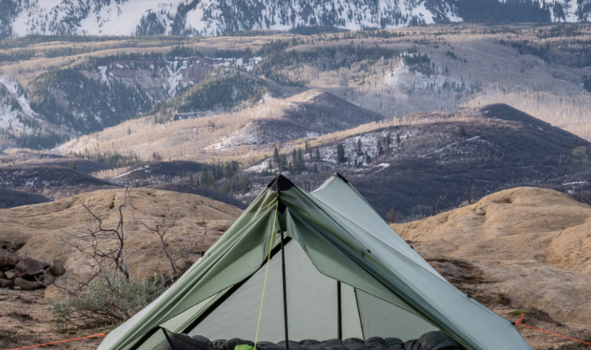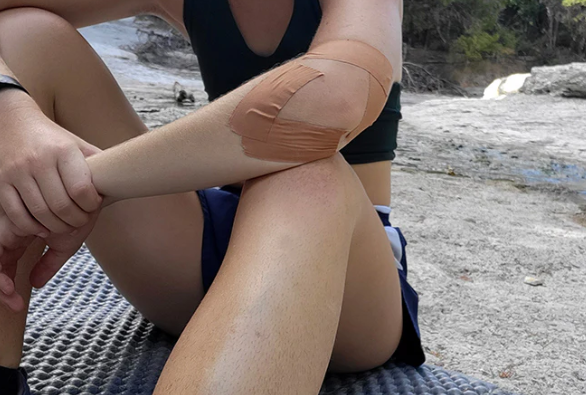
Trekking pole tents have become an essential choice for those looking for ultralight, efficient shelters. Using trekking poles for your tent structure not only saves weight but also enhances the multi-functionality of your gear. If you’re already carrying trekking poles, why not put them to use as tent supports? These tents are durable, lightweight, and they give your setup a professional touch. Below is an overview of what trekking pole tents are, how they work, and my top 6 picks for 2020.
What is a Trekking Pole Tent?
A trekking pole tent uses trekking poles to create its structure, eliminating the need for traditional, heavy tent poles. This design helps save both weight and space, making it a favorite for ultralight backpackers. However, choosing between a trekking pole tent and a traditional one requires considering several factors beyond just the weight savings.
Freestanding vs. Non-Freestanding Tents
- Freestanding Tents: These tents don’t require stakes to stay up. They are easy to set up and move around. While convenient for beginners and casual campers, freestanding tents typically come with extra pole weight and the need for stakes to fully extend vestibules.
- Non-Freestanding Tents: These tents require both poles and stakes to be fully functional. They are generally lighter and faster to set up than freestanding tents but come with certain trade-offs. For example, you need to carefully select a flat area to pitch the tent, and trekking poles can break, leaving you without a critical part of your tent setup. These tents also may struggle with snow shedding compared to their freestanding counterparts.
Single Wall vs. Double Wall
- Single Wall: These tents are made from one layer of waterproof material. They are lightweight and simple but can suffer from condensation. The lack of separation between the inner and outer layers means that moisture inside the tent can lead to water droplets forming on the walls.
- Double Wall: These tents have two layers—an inner layer (typically mesh) for ventilation and an outer rainfly for waterproofing. This setup helps reduce condensation and allows for more modular setup options. While slightly heavier, double-wall tents provide better air circulation and protection against moisture.
Top 6 Trekking Pole Tents for 2020
I’ve selected these trekking pole tents based on their weight, design, and performance. Each one offers unique features suited to different types of adventurers, from those prioritizing lightness to those looking for more space and durability.
1. Zpacks Duplex (Solo Version: Plexamid)
- Weight: 19.4 oz
- Floor Area: 45″ x 7.5 ft
- Vestibule Area: 20.75″ deep on each side
- Peak Height: 48″
- Doors: 2
- Walls: Single wall
- Material: DCF
- Price: $599
The Zpacks Duplex is a top choice for those looking for an ultralight shelter. Made from DCF (Dyneema Composite Fabric), it’s the lightest option on this list. It’s a reliable, durable tent that performs well in various conditions, making it ideal for those who want the lightest possible shelter without compromising on quality.
Best For: Ultralight hikers and those seeking the lightest shelter.
2. Tarptent Stratospire 2 (Stratospire Li Version: DCF)
- Weight: 44 oz (Stratospire Li: 28 oz)
- Floor Area: 52″ x 86″ (31 sq ft)
- Vestibule Area: Large
- Peak Height: 50″
- Doors: 2
- Walls: Double wall
- Material: Silnylon or DCF
- Price: $359 (Li Version: $689)
The Stratospire 2 from Tarptent is a versatile, spacious option for couples or those with extra gear. Its design allows for easy setup with the fly-first configuration, which helps keep the inner mesh dry. The Stratospire also offers added space with optional “sidecars” for extra storage, making it perfect for those who need more room.
Best For: Couples, families with kids or dogs, and those looking for a versatile shelter for 3-4 season use.
3. Gossamer Gear The Two (Solo Version: The One)
- Weight: 29 oz
- Floor Area: 52″ (head) to 42″ (foot) x 89″ long (29 sq ft)
- Vestibule Area: 35″ deep each side
- Peak Height: 46″
- Doors: 2
- Walls: Single wall
- Material: Silnylon
- Price: $375
The Gossamer Gear The Two offers a fantastic balance of lightweight design and living space. It features large vestibules for gear storage and is a great option for ultralight backpackers looking for more space than typical solo tents. Its 15-denier nylon construction makes it slightly fragile, but it’s a solid choice for weight-conscious hikers.
Best For: Those who prioritize a high space-to-weight ratio.
4. REI Co-op Flash Air Two (Solo Version: Flash Air One)
- Weight: 37 oz
- Floor Area: 52″ (head) to 42″ (foot) x 88″ long (31.7 sq ft)
- Vestibule Area: 16.8 sq ft
- Peak Height: 42″
- Doors: 2
- Walls: Single wall
- Material: Silnylon
- Price: $299
REI’s Flash Air Two brings a new level of quality to the ultralight tent market. While slightly heavier than some others, it offers increased headroom with sturdy plastic hubs and additional foot poles for extra ventilation and toe room. For the price, it’s a solid value in the ultralight tent space.
Best For: Budget-conscious hikers who want solid quality and functionality.
5. Six Moon Designs Lunar Duo (Solo Version: Lunar Solo)
- Weight: 45 oz
- Floor Area: 54″ x 90″ (34 sq ft)
- Vestibule Area: 24 sq ft
- Peak Height: 45″
- Doors: 2
- Walls: Single wall
- Material: 30D Silnylon
- Price: $375
The Lunar Duo is on the heavier side of ultralight tents, but it compensates with abundant living space. With its spacious floor area and decent peak height, it’s an excellent option for two people or those who need a comfortable shelter for a longer trip. The 30D fabric provides durability without adding significant weight.
Best For: Those who need more room and durability without sacrificing much weight.
6. Tarptent Motrail (Solo Version: Protrail)
- Weight: 34 oz
- Floor Area: 52″ x 84″ (30 sq ft)
- Vestibule Area: 12 sq ft
- Peak Height: 47″
- Doors: 1
- Walls: Single wall
- Material: 30D Silnylon
- Price: $265
The Motrail from Tarptent offers a minimalist design with great durability and a reasonable price. It’s a lightweight, single-wall shelter with a simple setup that doesn’t compromise on space. The $265 price tag makes it an excellent choice for hikers on a budget who still want a high-quality shelter.
Best For: Budget-conscious hikers who value durability and simplicity.
Conclusion
Choosing the right trekking pole tent depends on your specific needs, whether it’s weight savings, space, durability, or price. Each of these options offers something unique, from the ultralight Zpacks Duplex to the spacious Lunar Duo. Consider your hiking style and requirements, and you’ll find the perfect shelter to complement your trekking adventures.








